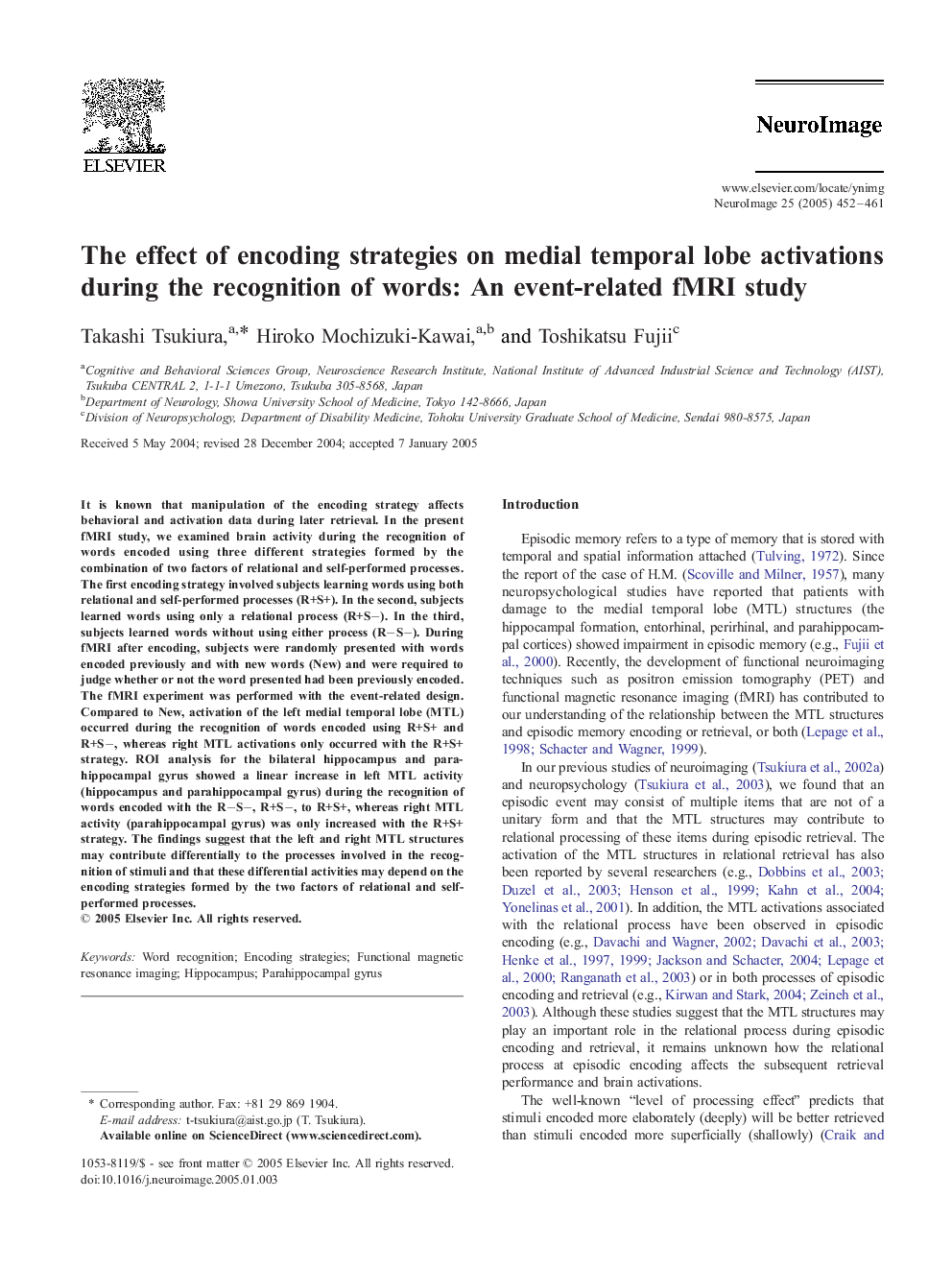| Article ID | Journal | Published Year | Pages | File Type |
|---|---|---|---|---|
| 9198138 | NeuroImage | 2005 | 10 Pages |
Abstract
It is known that manipulation of the encoding strategy affects behavioral and activation data during later retrieval. In the present fMRI study, we examined brain activity during the recognition of words encoded using three different strategies formed by the combination of two factors of relational and self-performed processes. The first encoding strategy involved subjects learning words using both relational and self-performed processes (R+S+). In the second, subjects learned words using only a relational process (R+Sâ). In the third, subjects learned words without using either process (RâSâ). During fMRI after encoding, subjects were randomly presented with words encoded previously and with new words (New) and were required to judge whether or not the word presented had been previously encoded. The fMRI experiment was performed with the event-related design. Compared to New, activation of the left medial temporal lobe (MTL) occurred during the recognition of words encoded using R+S+ and R+Sâ, whereas right MTL activations only occurred with the R+S+ strategy. ROI analysis for the bilateral hippocampus and parahippocampal gyrus showed a linear increase in left MTL activity (hippocampus and parahippocampal gyrus) during the recognition of words encoded with the RâSâ, R+Sâ, to R+S+, whereas right MTL activity (parahippocampal gyrus) was only increased with the R+S+ strategy. The findings suggest that the left and right MTL structures may contribute differentially to the processes involved in the recognition of stimuli and that these differential activities may depend on the encoding strategies formed by the two factors of relational and self-performed processes.
Keywords
Related Topics
Life Sciences
Neuroscience
Cognitive Neuroscience
Authors
Takashi Tsukiura, Hiroko Mochizuki-Kawai, Toshikatsu Fujii,
